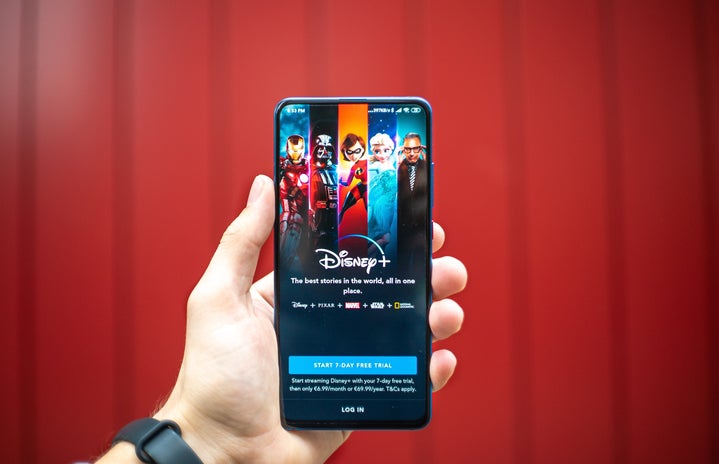Spoiler Alert: If you’re a Disney fanatic like me, you have seen “Wandavision”, the creative Marvel series on Disney Plus. Wanda creates an alternative reality to keep her husband and children safe from the dangers of the outside world by creating a sitcom show reality going through the different eras of television.
- The 1950s
-
The show starts in the 1950s with a horrible laughing track and sexist gender roles. The man goes to work and the woman stays home and is supposed to cook dinner for her husband, her husband’s boss, and his wife. Besides the costumes and hairdos, Wanda cooks dinner while Vision reads the newspaper. A commercial mimics the housewife nature of the 1950s, a sense of comfort and safety for Wanda. The vocal intonation of the characters, laughing track, and house decor relate back to the plot of the alternate universe Wanda created to protect her beloved Vision. The 1950s were known for the social community dynamic and a booming economy. Wanda chose to start her story in the 1950s for the happiness of family life, the social nature of the neighborhood, and Vision’s workplace dynamic.
- The 1960s
-
The next television era is the 1960s, with mimicking scenes of “Leave it To Beaver” and “The Dick Van Dyke Show”. The theme song for the episode is cartoony and just as the costumes mirror that of the 1960s, the commercial halfway through does the same. It talks about how a man needs two accessories in his life, a watch and his special lady, thus characterizing women as objects. Wanda is the magician’s assistant for Vision in the episode and serves to protect him using her magic to not reveal to the neighborhood they are different. This starts to introduce the new age of the 70s where a woman’s role becomes more dominant. At the end of the episode, everything turns to color just as the couple becomes stronger and the outside world attempts to get in.
- The 1970s
-
The 1970s drape Wanda and Vision in hippy 70s clothes, relating to their happy life at this moment in time. The house turns bright colors and Wanda becomes pregnant with Vision’s and her real-life children. In this era of economic suffrage, the perfect family faces struggles when an outsider accidentally reveals her identity. Wanda’s perfect, safe reality she had created for her family starts to crumble as the outside world tears its way in. The commercial halfway through talks about needing a break, one Wanda desperately needed after fixing everything in the episode relating to the outside world.
- The 1980s and 1990s
-
With permed hair and groovy outfits, the 1980s in Wanda’s alternate reality start to fall apart as Vision begins to notice errors with the neighbors. The screaming babies then transform into children and the show is pushed a decade later, revealing a new theme song that reflects the themes of popular 90s shows. When the stories of dogs dying and children overcoming that loss were popular, the same occurs in the episode. Wanda starts to look confused, as this isn’t what she imagined. The dog wasn’t supposed to die, as she never wanted her family to struggle. The episode ends in a fight between the happy couple.
- The 2000s
-
In the age of anxiety and Lindsay Lohan, the 2000s was the last era of television in Wanda’s reality. Large plaid robes and one on one interviews encapsulated this era of television into the plot of “WandaVision”. With a “Gilmore Girls” feeling, this episode is when Wanda’s perfect reality finally collapsed.
Disney uses television eras to guide the plot of “WandaVision”. After reading this, go back and rewatch with this mindset. It’s so much better!



